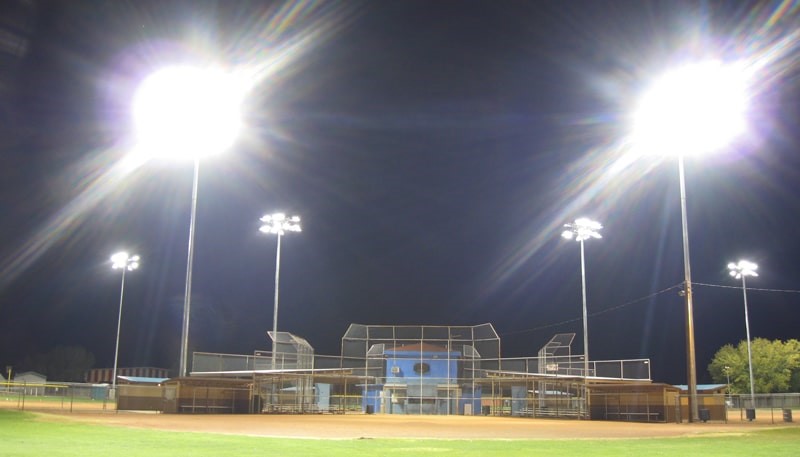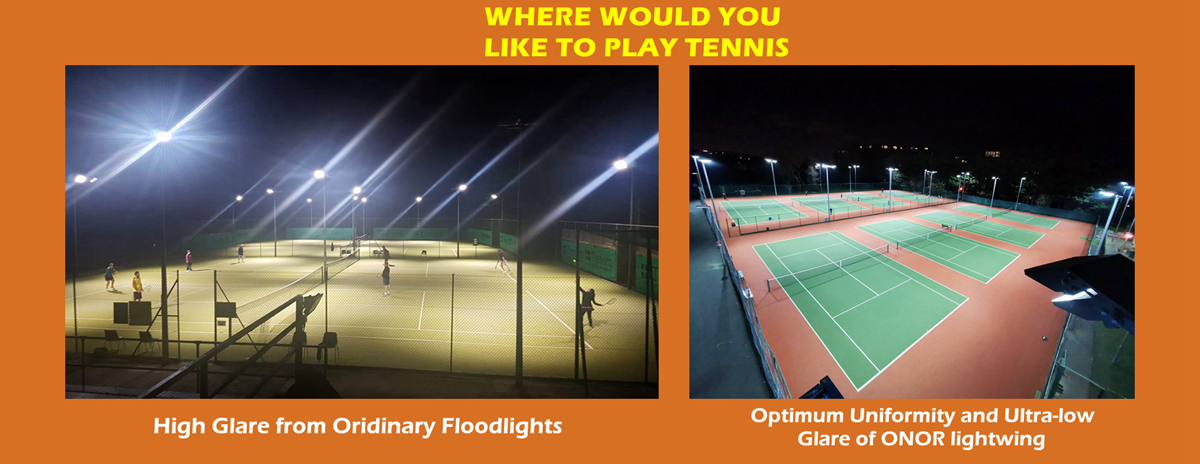Generally Speaking, glare is a phenomenon in which the light is dazzling and dazzling, causing the human eye to see objects clearly, uncomfortable for the human eye, or even invisible at all. Therefore, lighting design needs to limit glare.
The standard definition of glare is:
A visual phenomenon that causes discomfort or reduces the ability to observe details or objects due to inappropriate brightness distribution or brightness range in the field of view, or the existence of extreme brightness contrast. -”Architectural Lighting Terminology Standard” JGJ/T 119-2008
Sports lighting uses the glare index (GR) to evaluate the degree of glare, which is a psychological parameter to measure the subjective response of outdoor sports venues and other outdoor venues lighting devices to the reduction of visibility and uncomfortable feeling caused by human eyes. It is from the CIE standard.
In the formula:
Lvi-the brightness of the light curtain (cd/m2) generated by the light emitted by the lamp directly hitting the eyes;
Lve-the brightness of the light curtain (cd/m2) caused by the light directly incident to the eye caused by the environment
Different GR values indicate different degrees of glare, as shown in Table 1.
Table 1 Glare Index and Glare Degree
|
Glare Quality Class GF |
Glare Level |
GR Value |
|
1 |
Unacceptable |
90 |
|
2 |
– |
80 |
|
3 |
Interferential |
70 |
|
4 |
– |
60 |
|
5 |
Barely Acceptable |
50 |
|
6 |
– |
40 |
|
7 |
Perceptible |
30 |
|
8 |
– |
21 |
|
9 |
ND |
10 |
The internationally recognized GR=50 is the acceptable glare for people, so the international standard requires that the GR of sports lighting for formal competition venues is not greater than 50.
Strictly speaking, the above formula is suitable for outdoor venue lighting, and my country has extended this application to indoor venues, and it has been applied since 2007. However, the GR value of indoor venue lighting is required to be no more than 30.
Usually glare is for the human eye, which can be seen from the definition of glare. However, with the development of sports broadcasting, major competitions also put forward glare requirements for cameras. For example, the Olympic Games requires that the GR of the camera is not greater than 40. For details, please refer to the author’s monograph “Sports Lighting Design Manual” (published by China Electric Power Press).
Post time: Oct-28-2020




